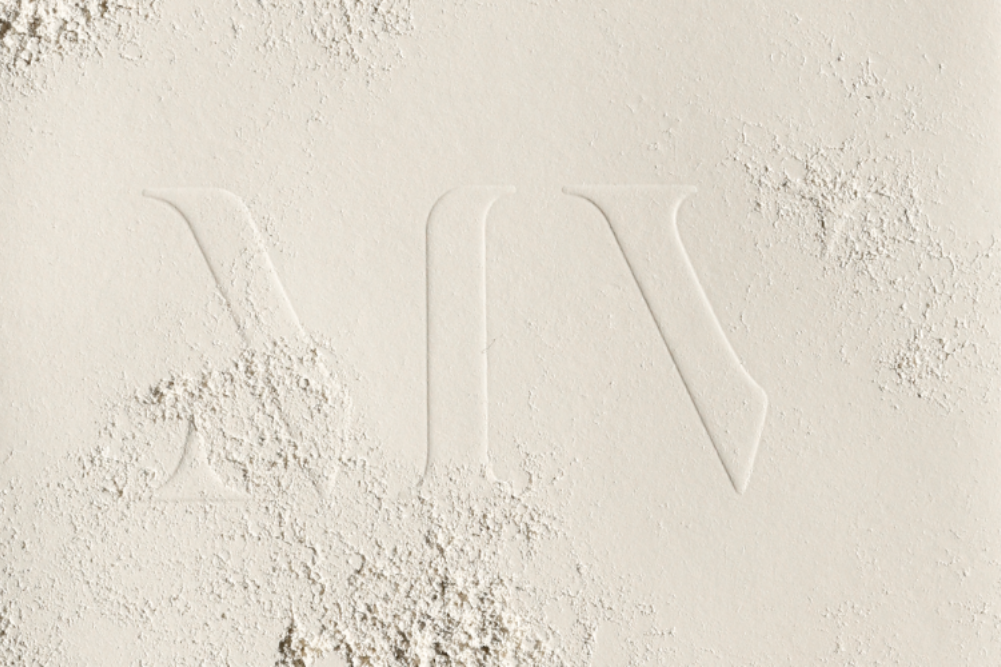10 tips for going green with your beauty routine
Being called the “green goddess”, as I occasionally have been, is a bit like that new body-shaping underwear — flattering but a little uncomfortable. Any title with the word “goddess” in it, be it green goddess or domestic goddess, is a tough call: it sets such high expectations. We associate the goddesses of mythology with supernatural beauty, whatever their other strengths, virtues and characteristics. While we aspire to be more goddess-like in the looks department, there are days we wake up feeling more gorgon than goddess.
Admittedly, being photogenic has helped me in my work as an environmentalist who is trying to bring sustainability into the mainstream. So should I embrace the Machiavellian idea that “the cause justifies the means” and scale up my beauty routine? Should I chuck out my green values and summon the silicon and botox in the name of artificially coloured and flavoured eternal youth? Not in a pink fit!
Being green and gorgeous is about finding balance and compromise. Somewhere between soap and ceramide capsules, we cross over from the necessities of hygiene to the luxury of pampering and beauty. From there, it’s a slippery (but beautifully scented) slope into unsustainable over-consumption. The good news is we can lessen the footprint of our beauty routine by making better, greener choices. Here are 10 guiding principles for being green and gorgeous.
1. Put it in perspective
While it’s good to put green thinking into your purchasing decisions, keep in mind that the environmental gains of a greener beauty are small compared with things like your choice of transport (bus, bike, hybrid or humungous four-wheel drive) or the size and efficiency of your house. Clean up your whole lifestyle as well as your beauty routine.
2. Less is more
Arguably, the biggest environmental problem with cosmetics and toiletries stems not so much from the specific items we buy but from how much of the stuff in total we consume. Every product we buy, beauty products as well as other consumer goods, requires energy, water and material resources to be produced. Plus, the toiletries that are rinsed down the plughole (shampoo, conditioner, bubble bath, facial cleansers and so on) add to the chemical load of the wastewater that urban water treatment plants then have to deal with and potentially recycle.
An easy way to make your lifestyle — including your beauty regime — greener is to simply consume less stuff. This means fewer products in total (life is too short to spend an hour a day in the bathroom) and using a reasonable (not excessive) amount of the products you do use.
Take shampoo, for example. Some brands use oils derived from petrochemicals, while others replace them with palm oil. But rainforests in Southeast Asia are being cleared and converted to palm oil plantations to meet growing demand for palm oil, releasing huge quantities of greenhouse emissions and threatening rainforest species, such as orangutans. By all means, go for the plant-derived alternative, but help the environment further by reducing your total consumption of shampoo. Wash your hair once only (you don’t need to “rinse and repeat”) and use the correct amount. The shampoo my children use is in a pump pack to help them measure the right dose.
3. Recognise the difference between personal and environmental health
Something that is better for the planet isn’t necessarily better for your health and vice versa. Take tobacco. In the USA (where else?), you can actually buy organic cigarettes, made from tobacco that is organically grown. As with all organic produce, this means less pesticides and artificial fertiliser introduced into ecosystems, less impact on the land and healthier conditions for the farmers who grow it. But it does not mean that smoking these cigarettes is at all healthy. It’s not!
When it comes to cosmetics, remember that “green” and “natural” doesn’t always mean a product is a healthier choice for you. This is particularly important for sensitive individuals such with those with allergies or chronic fatigue syndrome. For example, people with nut allergies may need to think twice before dousing themselves in sweet almond oil.
4. Waste not
Cosmetics are a product area where over-packaging is rife. Given that the beauty business is all about aesthetics, it’s no surprise that the aesthetics of the products themselves are well thought through and heavily invested in. While a certain level of packaging is necessary to contain the product and keep out contaminants, cosmetics and toiletries often come with bright and attractive but excessive layers of packaging, all aimed at getting your attention in the effort to secure the sale. Skin treatment capsules, for example, might have four layers of packaging (capsule, jar, box, then outer cellophane) between person and product.
The fragrance gift sets produced for Mother’s Day and Christmas are serial over-packaging offenders, offering two or more small bottles in a large, beautifully presented box that gives the appearance of luxury and value while adding to the resource consumption of the package and increasing the amount of waste to be dealt with later.
Choose products that are sensibly packaged, preferably in packaging you know you can recycle in your local area. For products that have a relatively long shelf life, such as shampoo and conditioner, buying them in bulk quantities will reduce the amount of packaging needed per unit of product.
5. Don’t be blinded by science
Beauty advertising sometimes has a lot of scientific-sounding statements but very little useful information. Scientific language is often used (or, really, misused) to lend a sense of credibility to a brand and increase its appeal, but sometimes it’s little more than smoke and mirrors. Water, for example, can be made to sound vaguely dangerous by calling it “dihydrogen monoxide”, or exotic and desirable by calling it “eau” or “aqua”. Brands that genuinely want to communicate specific information to their customers do so in language that the average person can understand.
Take all scientific-sounding claims with a grain of salt, read the fine print and don’t read meaning into statements that isn’t there. For example, one anti-wrinkle cream magazine advertisement boasts that one of its star ingredients “helps the production of fibres that support the skin**”. The fine print, and full credit to the advertiser for including it, states that this claim is supported by “test in vitro”. “In vitro” means the testing was performed outside a living organism. This is an important distinction because phenomena observed in test tubes aren’t necessarily replicated in living tissues, even if the miracle ingredient does penetrate the skin to a level where it could be effective.
6. Go organic
As with food, favour products made with certified organic ingredients. Organic farming is better for the health of farmers and the planet. Note that the word “organic” is often used to mean anything living or once-living, so only give credence to products that state they are “certified organic”. They will often state the name or logo of the certifying organisation. Also look for the detail that specifies whether “certified organic” applies to all of the plant-derived ingredients or just one or two.
7. Know your poison
Several years ago, alpha hydroxy fruit acids burst on the beauty scene offering younger-looking skin, treatment for acne or something akin to a “natural chemical peel” in a jar. Consumers bought enthusiastically from the veritable fruit salad of AHA face creams on offer, little realising that AHAs can irritate the skin. Sensitivity is a highly individual thing: some asthmatics have trouble with fragranced products and people with sensitive skin may be limited to a few very gentle products, while some lucky people seem to be able to handle anything. Try to know and understand the limitations of your own body’s sensitivities and remember this when weighing up recommendations of other products.
8. Look for locals
A while ago, I was asked to test a Canadian sugar-based hair removal wax. Reading the ingredients list on the label — cane sugar, honey, lemon juice and tea-tree oil — it struck me that all of these ingredients grow well in Australian conditions (and, one would assume, poorly in Canada). Along with the offerings of our own unique local biodiversity, Australia has a huge range of locally produced botanicals, providing Australian-made beauty brands with a plethora of ingredients to play with. So keep an eye out for Australia’s homegrown green grooming brands.
9. Try DIY
Cosmetics can be imported from great distances and made in far-away factories. It’s difficult for the average consumer to have any real sense of what is really going on environmentally during the manufacture of a specific product. Unless, of course, they become their own cosmetics manufacturer. There are many simple recipes for green grooming products you can make yourself using ingredients such as almond oil, wheatgerm, lemon juice and various herbs.
Making your own preparations reduces the transport-related emissions of commercial products, allows you to avoid certain ingredients and reduces the use of preservatives, giving you the assurance that the product is fresh and is often a lot cheaper than store-bought cosmetics. You can even grow some of your own ingredients.
10. Get real!
With the whole beauty thing, it’s important to have reasonable and realistic expectations. For example, it’s normal for a 20-year-old to have the skin of a 20-year-old, but her 50-something mother should not expect to have the same skin. Her face has enjoyed many more days of sunshine and her body chemistry has changed through childbearing, breastfeeding and menopause.
The idea that Beauty comes from within isn’t new, but it’s vitally important as we face each stage of life in a culture that idolises youth. Ask yourself if a “flaw” in your complexion is really a flaw or do you just see it that way? As fine lines begin to appear on my face, I’m learning to read between them.
The lines on my face tell a story about the many expressions my face has worn over my lifetime. There’s a few between my eyebrows that say I can be serious and spend many hours concentrating, but there are also those at the outer edges of my eyes and near the dimples of my cheeks that say I’ve smiled and laughed a lot in my 36 years. And I’m really happy with that.
Tanya Ha is a writer, television presenter, environmentalist and sustainable living advocate. She is the author of the acclaimed eco-guide book Greeniology and a media commentator on environmental issues. Her new book Green Stuff for Kids (Melbourne University Press) has just been published.







